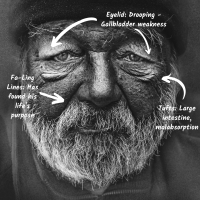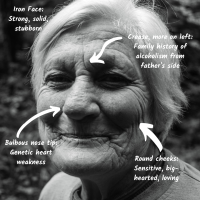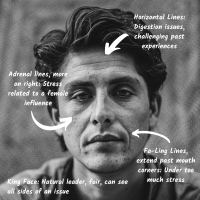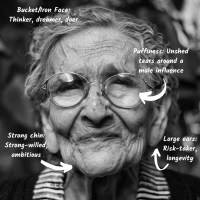Basic Analysis


Discover who you really are, so you can live a healthier, more authentic life. Your face shape teaches you about your communication style, symptom tendencies and personality characteristics. Your facial features teach you about your health strengths and weaknesses, genetic tendencies and goes even deeper into your personality.
With your Basic Analysis, you will receive a written report of your facial analysis with your face shape and what it means, plus an explanation of each feature and how they represent your health and personality.
For the most accurate analysis, here’s what we need: Three photos of your face (from the neck up) – one from the front, your right profile and your left profile.
- Neutral expression – Face shapes are easiest to determine when you’re not smiling.
- Minimal to no makeup – Makeup is designed to cover blemishes and marking, all of which are wonderfully diagnostic.
- Hair pulled back away from ears and forehead – These two features are significant.
- Short facial hair, if possible – Long facial hair can make it difficult to assess face shape, chin and jaw.
- No digital manipulation or filters – We want to see everything, “flaws” and all! (In facial diagnosis, there are no flaws.)
- Good lighting and camera resolution – The more detail, the better.
- Have another person take the picture (no selfies), if possible – Selfies can distort certain facial features
Advanced Analysis


Discover who you really are, so you can live a healthier, more authentic life. Your face shape teaches you about your communication style, symptom tendencies and personality characteristics. Your facial features teach you about your health strengths and weaknesses, genetic tendencies and goes even deeper into your personality.
With your Advanced Analysis, you will receive a written report of your facial analysis plus a 30-minute phone consultation with Kelly Murray, CNHP. She will go over your facial analysis in greater depth and give you recommendations for achieving optimal health.
For the most accurate analysis, here’s what we need: Three photos of your face (from the neck up) – one from the front, your right profile and your left profile.
- Neutral expression – Face shapes are easiest to determine when you’re not smiling.
- Minimal to no makeup – Makeup is designed to cover blemishes and marking, all of which are wonderfully diagnostic.
- Hair pulled back away from ears and forehead – These two features are significant.
- Short facial hair, if possible – Long facial hair can make it difficult to assess face shape, chin and jaw.
- No digital manipulation or filters – We want to see everything, “flaws” and all! (In facial diagnosis, there are no flaws.)
- Good lighting and camera resolution – The more detail, the better.
- Have another person take the picture (no selfies), if possible – Selfies can distort certain facial features.
